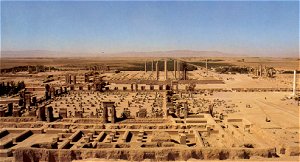
( Photo by Henri Stierlin ) |
A view over the ruins of Persepolis from the tomb of Artaxerxes II, which is carved into the rock of the mountain known as Kuh-e Rahmat. |
Steps leading to the eastern portico of the Apadana of Persepolis.
On the right is the frieze of the 'Immortals', the imperial guard in three ranks, depicted one above the other. |
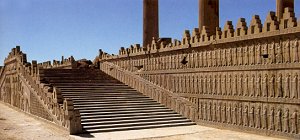
( Photo by Henri Stierlin ) |

( Photo by Henri Stierlin ) |
The Eastern aspect of the 'Gate of All Nations'.
Erected by Xerxes I at the beginning of the 5th century, these gateways are guarded by pairs of massive winged bulls with human faces. |
General view of the 'Hall of a Hundred Columns'.
This hall was used for the reception of the Subject Nations and collection of their tribute. |

( Photo by Afshin Alizadeh ) |
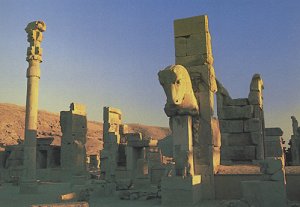
( Photo by Afshin Alizadeh ) |
A Doorway to the Hall of a Hundred Columns.
The hall consisted of a porch, doorways, a courtyard and its great hall (70m by 70m) with 100 columns, each of which was 12m high. |
Southern view of the 'Tachara', with the Apadana on the far right.
The Tachara, Tazar, or Winter Palace of Darius is the only building which is oriented to the south. |
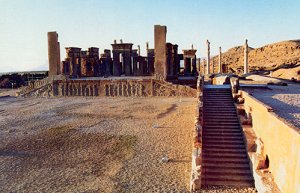
( Photo by Afshin Alizadeh ) |
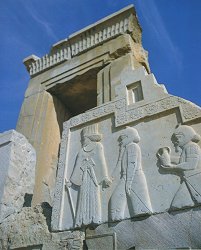
( Photo by Afshin Alizadeh ) |
Tribute bearers, Tachara, western staircase. |
Detail from western staircase, Tachara.
At Persepolis, the lion and the bull always stand at the side of the tribute processions, the picture of the annual festival of Noe-Rooz, the spring equinox. The lion is a symbol for the "sun" and "strength", and the bull is a symbol for the "earth" and "affluence". This image represents the return of the sun to the earth, at the time of Noe-Rooz. |
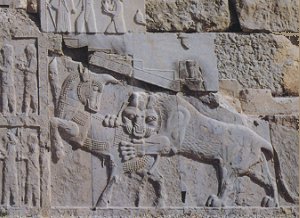
( Photo by Afshin Alizadeh ) |
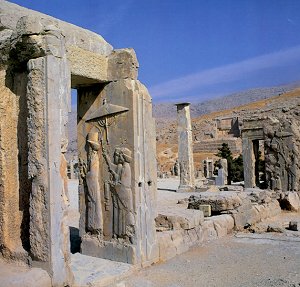
( Photo by Afshin Alizadeh ) |
The 'Hadish', palace of Xerxes, seen from the North.
This palace occupied the highest level of the terrace. It stood on living rock at the edge of a deep step and benefitted from a glorious view of the lanscape to the south. |
Detail from the western stairway, the Hadish.
The god Ahura Mazda depicted as a human figure arising from the winged sun-disc, was regularly carved over the figures of the kings, symbolising divine protection. |
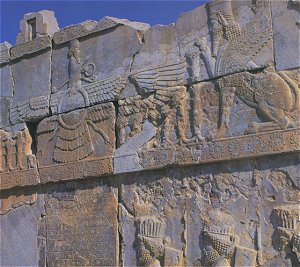
( Photo by Afshin Alizadeh ) |
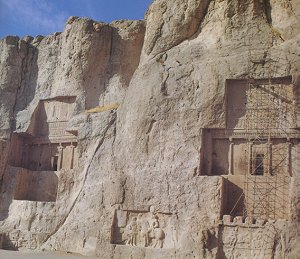
( Photo by Afshin Alizadeh ) |
The Achaemenian Tombs and Sassanian bas-reliefs, Naqsh-e Rostam.
Naqsh-e Rostam was the spectacular site, which overlooked the city of Istakhr. It was chosen by Darius and his three immediate successors for their rock-tombs. Subsequently the Sassanians added their own bas-reliefs. There is evidence of much earlier Elamite carvings, showing the site was used before Darius. There are also twin fire altars, and a square stone building, known as the cube of Zoroaster. |